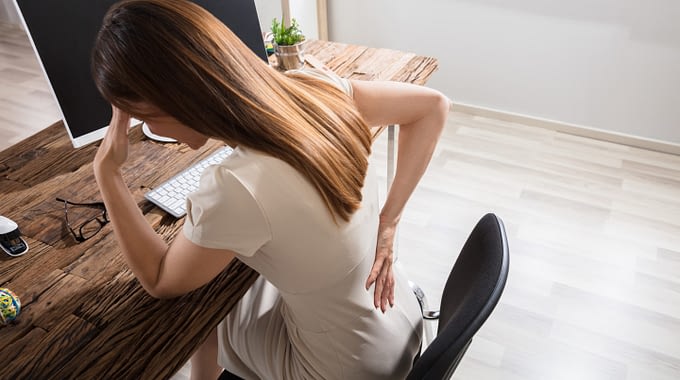
The Perils of Sitting
Prolonged sitting has many negative impacts on the body. It has been shown to boost risk for cardiovascular disease, certain cancers and even type 2 diabetes in adults. Studies have shown that adding 2 minutes of light activity every hour can help reduce the risk of having one of these diseases.
While prolonged sitting has many negative health effects, for the purpose of this article we are going to focus on the effect it has on the spine, specifically the lower back and neck.
The Problem
- The seated position, especially with added forward flexion, has the MOST load through the discs, joints and ligaments of the lumbar spine.
- Our lumbar spine doesn’t like to be loaded for extended periods of time, leading to wear and tear, disc issues and overall stiffness.
- Sitting creates tightness in the hip flexors creating a pull through the low back that can affect movement even hours after sitting.
- After an hour or two of prolonged sitting, our ligaments start to elongate (called creep) which gives us bad postural habits through slouching and creates a less stable spine.
- Our lower back flexes forward, thoracic spine (mid back) starts to round and our head/neck starts to flex forward towards the computer screen.
- This creates bad postural habits. Bad posture leads to tightness in neck and upper back muscles as well as joint compression and stiffness.
Solutions
If taking away sitting is not an option foryou, here are some helpful tips to combat a long day at the office!
- Invest in an ergonomic chair: This helps keep your spine in a good postural position.
- Have your workstation assessed: Simple changes like where your computer and keyboard are positioned are one of the many changes to the workstation that can help during the day.
- Begin postural exercises: There are great exercises to train your muscles to get into proper postural positions.
- Get up and move! Even if you have the best chair, the best workstation setup, and the best posture in the world, sitting in that position for more than 30-40 minutes at a time willcreate issues. Stand up, go for a minute walk, stretch on the spot are some good examples of moving.
- Stretch and roll: Stretching at your desk is important. Stretching throughout the day and night even when not at your desk is even more important. An addition to stretching can be a trigger ball and foam roller todo more work on tight muscles.

Hi there! Such a wonderful write-up, thanks!